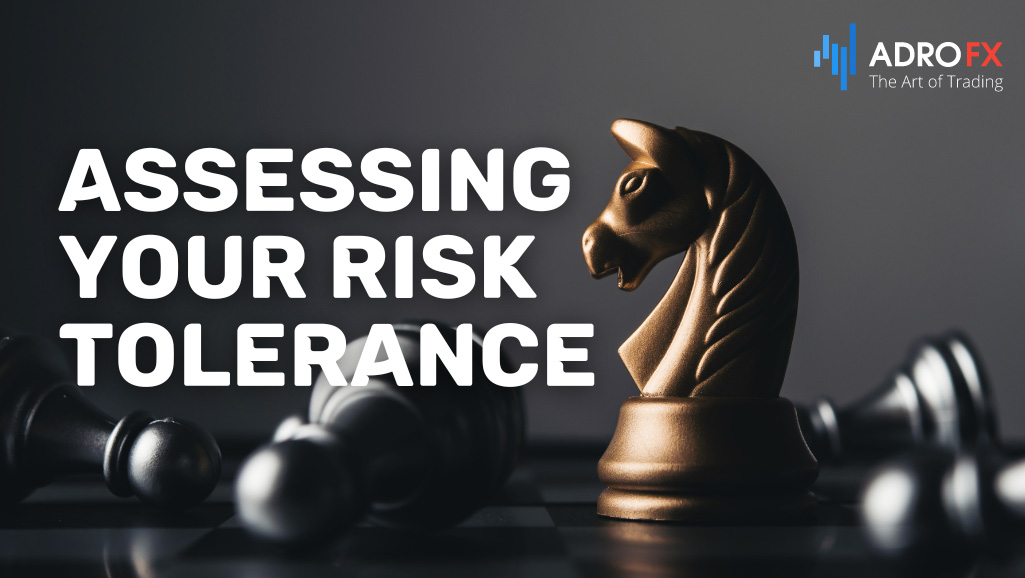Developing a Long-Term Investment Strategy

In the realm of investing, having a well-defined long-term strategy is not just advantageous - it’s crucial for achieving financial security and growth. Unlike short-term trading, which focuses on exploiting immediate market fluctuations for quick gains, long-term investing emphasizes sustained wealth accumulation over extended periods. By aligning investments with long-term goals and market trends, investors can capitalize on the power of compounding returns and weather short-term market volatility more effectively. A strategic long-term approach not only enhances the potential for higher returns but also minimizes the stress associated with frequent trading decisions.
Understanding Your Financial Goals
Defining clear financial goals is the cornerstone of any successful investment strategy. Whether aiming for financial independence, funding children's education, or securing a comfortable retirement, these goals provide a roadmap for making informed investment decisions. Differentiating between short-term needs (e.g., emergency funds, upcoming expenses), medium-term objectives (e.g., buying a house, funding education), and long-term aspirations (e.g., retirement savings, legacy planning) helps investors prioritize their financial milestones.
Each category of financial goal influences the choice of investment vehicles and the level of risk an investor is willing to undertake. Short-term goals often necessitate low-risk investments with liquidity, such as savings accounts or short-term bonds, to ensure capital preservation and accessibility. Medium-term goals may allow for moderate risk, including diversified portfolios of stocks and bonds, to achieve growth while managing volatility. In contrast, long-term objectives typically accommodate higher risk tolerance, enabling investments in growth-oriented assets like equities or real estate that offer greater potential for long-term capital appreciation.
Understanding the time horizon and specific objectives associated with each financial goal empowers investors to tailor their investment strategies accordingly, balancing risk and return to optimize outcomes over the long run.

Assessing Your Risk Tolerance
Understanding and defining risk tolerance is essential for constructing a successful long-term investment strategy. Risk tolerance refers to an investor's ability to endure market fluctuations and potential losses without feeling significant anxiety or making impulsive decisions. It is influenced by factors such as financial stability, investment knowledge, time horizon, and personal temperament.
Methods for assessing risk tolerance vary but commonly include questionnaires or scenarios designed to gauge how comfortable an individual is with different levels of investment risk. Questionnaires often present hypothetical scenarios involving potential gains and losses to help investors reflect on their emotional and financial responses. These tools aim to align investment strategies with personal comfort levels, ensuring that investors can withstand market volatility without abandoning their long-term goals.
The relationship between risk tolerance and investment time horizon is crucial. Generally, investors with longer time horizons, such as those saving for retirement or planning for future generations, can afford to take on more risk because they have more time to recover from market downturns. Conversely, investors with shorter time horizons, such as those saving for a near-term expense or nearing retirement, typically prefer lower-risk investments to protect capital and ensure liquidity.
Choosing Suitable Investment Assets
Investors face a multitude of choices when it comes to selecting investment assets, each offering unique benefits aligned with individual risk tolerance and financial objectives:
- Stocks
Representing ownership in companies, stocks offer the potential for capital growth through rising prices. They suit investors comfortable with market volatility, aiming for long-term growth. - Bonds
Issued by governments or corporations, bonds provide regular interest payments and return of principal at maturity. Ideal for risk-averse investors seeking income stability. - Real Estate
Includes direct ownership or through REITs, offering rental income and property appreciation potential. It diversifies portfolios beyond traditional assets. - Mutual Funds and ETFs
Managed funds pooling investments across assets (stocks, bonds, etc.), providing diversification and professional management. They cater to investors seeking broad exposure with varying risk levels.
Diversification across asset classes, industries, and geographic regions is essential for mitigating risk and enhancing portfolio resilience. Asset allocation involves distributing investments based on risk tolerance, financial goals, and time horizon to optimize risk-adjusted returns.
Selecting investment vehicles that match risk tolerance and objectives, and implementing a diversified asset allocation strategy, empowers investors to construct robust portfolios capable of navigating market fluctuations while pursuing sustained growth and financial stability.
Creating a Diversified Portfolio
Creating a diversified portfolio through strategic asset allocation is essential for achieving a balanced risk-return profile in investment:
Asset Allocation Strategy
Asset allocation involves distributing investments across various asset classes like stocks, bonds, real estate, and cash equivalents to manage risk and enhance returns over time. This approach recognizes that different asset classes offer varying levels of risk and return potential, allowing investors to mitigate overall portfolio volatility.
Diversification Strategies
- Across Different Asset Classes
Allocate investments based on risk tolerance and goals, with equities for growth potential and bonds for income stability. - Across Industries and Sectors
Spread investments across diverse sectors (technology, healthcare, energy) to minimize sector-specific risks and protect against downturns in specific industries. - Across Geographic Regions
Invest globally to capitalize on economic growth across different regions, reducing exposure to country-specific risks.

Benefits of Portfolio Rebalancing
Portfolio rebalancing is a crucial practice for investors aiming to maintain a disciplined investment strategy that aligns with their long-term financial goals. Regular rebalancing ensures that a portfolio remains consistent with the investor's desired asset allocation and risk tolerance, which can shift over time due to market fluctuations and personal circumstances.
Firstly, rebalancing involves systematically reviewing the performance of various assets within a portfolio. This step is essential because different asset classes often experience varying degrees of performance over time. For example, during a period of economic growth, equities might outperform bonds significantly. Without rebalancing, an investor's portfolio could become overweight in equities, thus increasing the overall risk level beyond the investor's comfort zone. By regularly assessing performance, investors can identify which assets have deviated from their target allocations.
Once the performance review is complete, the next step is to sell portions of the overperforming assets. While it might seem counterintuitive to sell assets that are doing well, this practice is critical for maintaining the intended asset allocation. Selling high allows investors to lock in gains and avoid overexposure to any single asset class. This step reduces the risk of a substantial downturn in value if the overperforming asset class experiences a sudden market correction.
The proceeds from selling overperforming assets are then reinvested into underperforming or underrepresented asset classes. This aspect of rebalancing ensures that the portfolio remains diversified, which is key to managing risk. Diversification spreads investment across different asset classes, sectors, and geographical regions, which can mitigate the impact of poor performance in any one area. Reinvesting in underperforming assets might seem risky, but it can be advantageous. Often, these assets are undervalued and have the potential for higher returns in the future as market conditions change.
A disciplined rebalancing approach helps investors adapt to market changes without succumbing to emotional decision-making. Markets are inherently volatile, and the psychological impact of market highs and lows can lead investors to make irrational choices, such as panic selling during downturns or greed-driven buying during upswings. By sticking to a rebalancing schedule, investors make decisions based on predetermined criteria rather than reacting to short-term market movements. This can lead to more consistent performance over the long term and helps to avoid the pitfalls of market timing, which even experienced investors find challenging.
In conclusion, the benefits of regular portfolio rebalancing are multifaceted. It helps maintain the desired asset allocation and risk level, promotes disciplined investing, enhances diversification, aligns the portfolio with changing financial goals, and can even offer tax benefits. By committing to a regular rebalancing schedule, investors can navigate the complexities of the financial markets with greater confidence and achieve their long-term investment objectives.
Investment Research and Due Diligence
Effective research is pivotal for informed investment decisions and aligning investments with financial goals and risk tolerance:
- Fundamental Analysis
Evaluate factors like earnings growth, profitability, debt levels, management quality, and industry outlook to gauge investment value and potential performance. - Technical Analysis
Analyze price charts, volume trends, and indicators to identify market patterns and optimize timing for entry or exit points. - Role of Professional Advice
Seek guidance from certified financial advisors for personalized strategies tailored to individual circumstances. Advisors offer expertise in navigating market complexities, optimizing portfolios, and maintaining discipline during market fluctuations.
By integrating thorough research, strategic diversification, and professional advice, investors can enhance their ability to identify quality investments, manage risks effectively, and achieve long-term financial success in dynamic market environments.
Implementing Your Strategy
Implementing a long-term investment plan involves a series of critical steps to ensure it aligns effectively with your financial goals and risk tolerance:
- Begin with Strategic Clarity
Translate your investment strategy into actionable steps by setting clear objectives, defining asset allocation strategies, and choosing appropriate investment vehicles that match your risk tolerance and investment horizon.
- Establish a Balanced Portfolio
Allocate investments across various asset classes such as stocks, bonds, real estate, and cash equivalents. Diversifying your portfolio helps mitigate risk and optimize returns over the long term, aligning with your specific financial goals and risk appetite.
- Choose Suitable Investments
Select investment options that fit your strategy; for instance, stocks offer growth potential but also come with higher volatility, while bonds provide stability and regular income. Consider diversified funds like mutual funds or ETFs for broader exposure within asset classes.
- Exercise Patience and Discipline
Long-term investing demands resilience and discipline to adhere to your investment plan despite market fluctuations. Successful long-term investors often emphasize the importance of maintaining composure and staying committed to their strategy throughout various market cycles.
- Regular Monitoring and Adjustment
Continuously monitor your portfolio's performance against predefined benchmarks and goals. Assess key metrics such as investment returns, asset allocation, and overall portfolio health regularly. Adjustments may be necessary based on evolving market conditions, economic trends, or changes in your personal financial situation.

Monitoring and Adjusting Your Portfolio
Regular portfolio reviews ensure alignment with long-term goals and risk tolerance. Assess whether the current asset mix remains suitable and adjust as needed.
- Indicators for Adjustment
Stay updated on market conditions, economic indicators, and life events that may impact your investments. These insights help guide strategic adjustments to your financial plan.
- Rebalancing Strategies
Realign your portfolio periodically to maintain the desired asset allocation. Establish thresholds that trigger rebalancing, typically based on significant deviations from target allocations or periodic reviews.
- Execution of Adjustments
Consider factors like tax implications, transaction costs, and liquidity requirements when rebalancing. Selling overperforming assets to fund underperforming or underweighted positions helps uphold your asset allocation strategy.
By diligently monitoring your portfolio and making informed adjustments, you can enhance investment returns, manage risk effectively, and progress toward achieving your long-term financial goals. Persistence, discipline, and strategic planning form the bedrock of navigating market volatility and achieving sustained investment success over time.
Tax Considerations and Efficiency
Considering taxes is essential for maximizing investment returns and preserving capital:
- Tax-Efficient Strategies
Implementing tax-efficient strategies is crucial to minimize the impact of taxes on investment returns. Utilize tax-advantaged accounts such as IRAs or 401(k)s for tax-deferred growth or tax-deductible contributions. - Tax Implications of Investments
Different investments have varying tax implications. Long-term capital gains are typically taxed at lower rates compared to short-term gains, while dividends may be taxed as ordinary income unless they qualify for lower rates as qualified dividends. - Minimizing Tax Liabilities
Employ strategies like tax-loss harvesting to offset gains, utilize tax-efficient funds, and strategically allocate assets to minimize tax exposure. For example, place tax-efficient investments in taxable accounts and higher-yield assets in tax-deferred accounts.
Conclusion
A long-term investment strategy is essential for sustained financial growth and security. Unlike short-term trading, it emphasizes steady wealth accumulation and compounding returns. Aligning investments with clear goals helps investors navigate short-term volatility and maintain a disciplined financial strategy.
Understanding financial goals provides a roadmap for informed decisions. Clear objectives, whether for retirement, education, or financial independence, ensure strategies align with risk tolerance and time horizons.
Assessing risk tolerance is crucial for constructing resilient portfolios that withstand market fluctuations. Tools like risk tolerance questionnaires help align investment choices with personal comfort levels.
Diversifying investments across stocks, bonds, real estate, and mutual funds mitigates risk and enhances returns. A balanced portfolio optimizes growth potential while managing risk.
Strategic asset allocation and regular rebalancing maintain portfolio alignment with desired asset allocation and adapt to changing conditions. Diversification across asset classes, industries, and regions enhances portfolio resilience.
Thorough investment research and due diligence are critical. Fundamental and technical analyses provide insights, while professional advice refines strategies and optimizes portfolios.
Implementing the strategy involves actionable steps, maintaining balance, and exercising patience. Regular monitoring and adjustment ensure alignment with long-term goals, responding to market changes and personal circumstances. Rebalancing and tax-efficient planning maximize returns and preserve capital.
In summary, a well-defined long-term investment strategy is crucial for financial security and growth. Clear goals, risk assessment, suitable investments, and diversification help navigate market volatility and achieve sustained wealth. Regular rebalancing and strategic adjustments optimize risk-adjusted returns, enabling investors to achieve lasting financial stability.
About AdroFx
Established in 2018, AdroFx is known for its high technology and its ability to deliver high-quality brokerage services in more than 200 countries around the world. AdroFx makes every effort to keep its customers satisfied and to meet all the trading needs of any trader. With the five types of trading accounts, we have all it takes to fit any traders` needs and styles. The company provides access to 115+ trading instruments, including currencies, metals, stocks, and cryptocurrencies, which make it possible to make the most out of trading on the financial markets. Considering all the above, AdroFx is the perfect variant for anyone who doesn't settle for less than the best.










